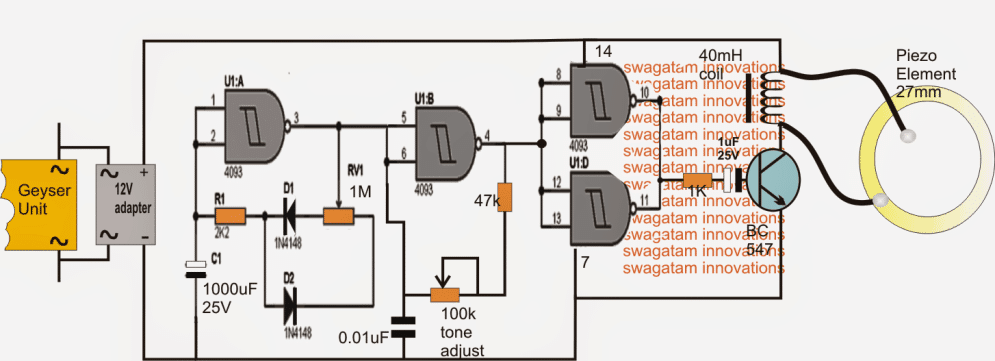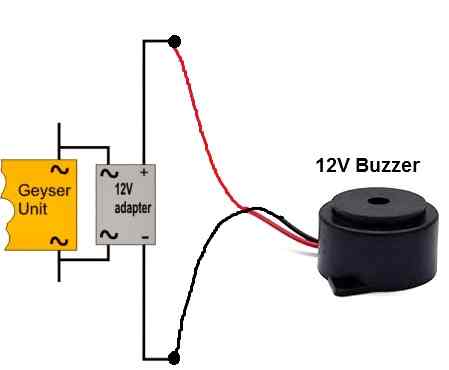In this post I have explained a simple water heater alarm circuit which may be used as a safety device for getting indications regarding the switched position of a water heater or a geyser through intermittent buzzer actuation. The idea was requested by Mr. Mathew.
Technical Specifications
To be frank i am new to your blog https://www.homemade-circuits.com
I was googling on how to make a reminder alarm for my water heater that i forget every time to switch off.
I would be lot grateful if you could give me a circuit diagram through your website on how to make it.
I am sure it would be beneficial for most of the people who gets into trouble with geyser switched on for long periods.
Looking for a piezzo buzzer circuit that sounds every one minute (adjustable) interval for a certain milliseconds or say one second (adjustable preferably again).
Hope your helping hand would guide me.
Regards
Mathew Joy
The Design
The proposed water heater alarm circuit functioning can be studied by referring to the following discussion and the diagram:
A single IC 4093 which is a quad Schmidt NAND gate IC is used here for executing two operations simultaneously viz for generating the timing pulses and the for generating the buzzer frequency.
As may be witnessed in the given diagram, the design can be divided into three basic stages, where U1A forms the PWM timer pulse generator stage, U1B becomes responsible for creating the buzzer frequency while the remaining two gates are used as buffers for delivering the U1B frequency output to the transistor/piezo buzzer network.
When the heater is first switched ON, the circuit also actuates wherein C1 grounds the input of U1A rendering a high at its output which in turn keeps the U1B disabled from making the buzzer frequency.
With the above situation the buzzer stays silent for the moment until C1 charges via R1, D1, RV1 and via the high logic from the output pin3 of the IC.
Delay Period Adjust using PWM
The delay period may be predetermined by suitably adjusting the duty cycle of the stage through RV1 (here it is intended to be 1 minute OFF and 2 sec ON)
A soon as this happens, a logic high appears at the input pin1/2 of the IC which instantly flips the output of U1A, enabling the U1B which now begins generating the required buzzer frequency, but only until C1 yet again discharges completely via R1, D2, RV1 and via the zero logic at pin3, the situation now reverts to the previous situation and continues repeating the procedures infinitely until the geyser is switched OFF.
This frequency is further buffered and transferred via U1D gates to the transistor buzzer driver stage which sounds the connected buzzer/coil assembly generating an ear piercing audible sound, indicating that the heater or the geyser is in the switched ON position and may be needs an attention
Circuit Diagram

You can simply connect a ready made buzzer with the adapter in the following manner:

I attached a led bulb in parallel in the bathroom passage to solve above issue.